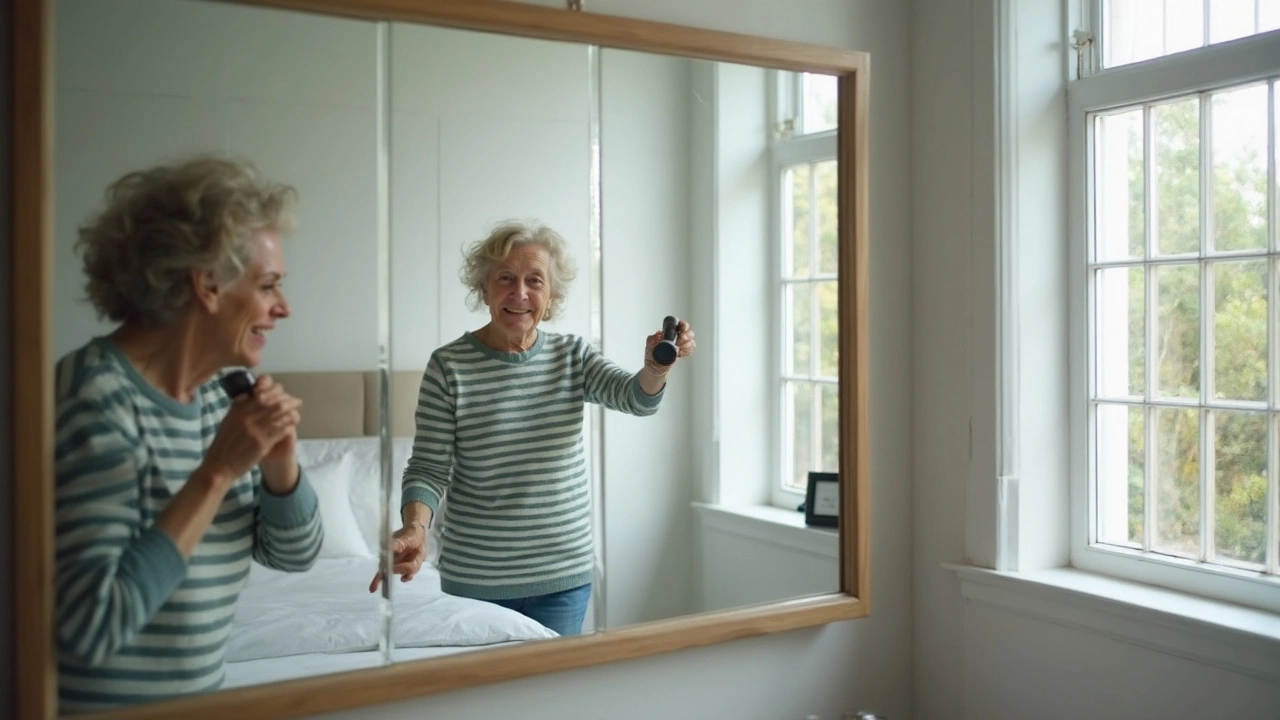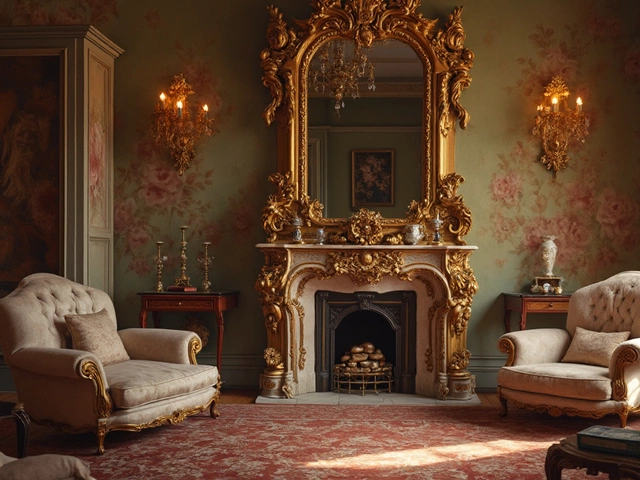Ever stared into a mirror and noticed your face looks a bit off—maybe stretched or a little wavy? That’s not you. It’s the mirror, and it’s not a good one. Quality mirrors show a clear, accurate reflection without any distortion. You don’t need fancy equipment either—just use your eyes and a few quick tricks to figure out if your mirror is up to scratch.
First, look at your reflection up close and then back away a few steps. Everything should stay sharp and straight. If lines wobble or faces bend, the glass is probably thin or uneven. Another quick hack: hold a pen or your finger against the mirror. In a good-quality mirror, the silver backing means there should be almost no gap where your finger meets its reflection. A large gap often means cheap glass or poor construction. Quality matters, especially if this mirror is for your bathroom or vanity—places where you really need accuracy.
- Check for Clarity and Reflection
- Inspect the Glass Thickness and Flatness
- Understand Backing and Coating Quality
- Tips to Avoid Low-Quality Mirrors
Check for Clarity and Reflection
A good mirror should give you a sharp, undistorted view—no warped faces, no weird blurs. Here’s where you really see the difference between a solid mirror and one that just looks decent from a distance. Even if you’re not picky, you’ll notice when the reflection feels "off." That’s why clarity matters most when sizing up mirror quality.
Light plays a big part too. In a high-quality mirror, reflections stay true in both natural sunlight and under regular room lights. A poor mirror might make colors look dull, yellowish, or give everything a shadowy edge. Real glass, especially the kind that’s at least 1/4 inch thick, reflects over 90% of visible light and keeps colors bright and true. Mirrors with cheap, thin glass reflect less light and make everything around you look dimmer.
Wondering about how this works in real life? Here are some quick checks:
- Look straight at your face in the mirror, then from a sharp angle. Good mirrors look crisp either way. Cheap ones might bend or distort the reflection on the edges.
- Hold a straight object like a pen or ruler against the mirror. In a good-quality mirror, the reflected line stays perfectly straight.
- Stand about five feet away and look for ripples or waves. If your body or background seems distorted, the glass isn’t flat enough.
Here’s a quick comparison to make things even clearer:
| Type | Reflection Sharpness | Color Accuracy | Distortion |
|---|---|---|---|
| High-Quality Mirror | Very sharp | True-to-life | None |
| Cheap Mirror | Blurry or fuzzy | Off-color, yellowish or shadowy | Noticeable, especially at edges |
Bottom line: trust your eyes. If something looks twisted or muted, you’re dealing with a low-grade mirror. High clarity and accurate reflection are non-negotiable if you actually want to see yourself as you are.
Inspect the Glass Thickness and Flatness
If you want a mirror quality that lasts and doesn’t mess with your reflection, start with the glass itself. The thickness makes a huge difference. Standard household mirrors usually start at 3mm (about 1/8 inch), but pros recommend at least 5mm (just under 1/4 inch) if you want something sturdy that won’t warp over time. Thinner glass warps more easily, especially in humid places like bathrooms.
You can test thickness just by checking the mirror’s edge. If it feels super slim, it’s probably a budget version. A heavier, thicker glass is a better bet for clear reflections and years of use. Flatness matters too—if the surface isn’t totally flat, you’ll see wavy or distorted images. To check, hold a small straight object like a key or a ruler against the mirror. If there’s a gap between the object and the mirror at any point, or if the reflected image looks distorted, the glass isn’t flat.
Consumer Reports sums it up perfectly:
"The best mirrors use thick, flat glass that provides a true-to-life image—anything less, and you risk seeing strange bends and ripples in your reflection."
So before you buy, run these quick checks, especially if you’re picking up a large wall or vanity mirror. Small flaws in thickness or flatness get way more obvious when the mirror is big.

Understand Backing and Coating Quality
The backing and coating behind a mirror are what make or break its long-term quality. Here’s the deal—most modern mirrors use a thin layer of silver or aluminum applied to the back of the glass. The best mirrors use real silver because it keeps reflections bright and accurate. Mirrors with aluminum backing are cheaper but often lose their shine and clarity faster. If you've ever seen odd black spots around the edges of an old mirror, that's basically the backing breaking down, usually from moisture getting in.
Look for mirrors labeled as having a “silvered” backing. In technical specs, you’ll see words like "99.9% silver" or "copper-free silver layer." Copper is often used as a layer over the silver to protect it, but copper-backed mirrors can tarnish and cause those annoying dark spots. So, copper-free options are less likely to develop these marks, especially in steamy rooms like bathrooms.
Another layer to pay attention to is the protective paint. Good quality mirrors have at least two layers of special mirror paint to seal the metal backing. This keeps out air and water, giving your mirror a longer life. A cheap mirror might only have one sloppy paint layer—that’s asking for trouble.
If you want to see how different options stack up, check out this quick comparison:
| Type | Backing Metal | Typical Lifespan | Resistance to Moisture | Common Uses |
|---|---|---|---|---|
| Standard Silvered | Silver | 15-20 years | High | Home, Bathroom, Gym |
| Aluminum-backed | Aluminum | 5-10 years | Medium | Budget Decor, Furniture |
| Copper-free Silvered | Silver (no copper) | 20+ years | Highest | Luxury, High-moisture Spaces |
If you’re shopping, run your hand gently over the mirror's edge on the back. If it feels rough or you spot peeling paint, skip it. That’s a sign corners were cut. Solid, even backing and a smooth paint job mean your mirror will last longer and look clearer for years. So, don’t just check the reflection; always peek behind the glass for real mirror quality.
Tips to Avoid Low-Quality Mirrors
If you don't want to waste money on a mirror that looks weird or falls apart after a few months, there are a few things you need to watch out for. Let's get to the good stuff—actual warning signs and smart moves.
- Mirror quality starts with flat, thick glass. Look for glass that's at least 1/4 inch (6mm) thick. Thinner glass is more likely to warp, causing bent or blurry reflections.
- Always check the backing. A decent mirror uses pure silver or aluminum for the backing layer—not tin. Silver-backed mirrors last longer and are less likely to develop that creepy black edge from moisture. If you see a sticker or description saying "copper-free" or "lead-free backing," that's a very good sign for durability and resistance to corroding.
- Examine the edges. Polish isn’t just about looks—the edges should be smooth, not jagged. Rough, sharp sides mean corners were cut on quality control.
- Run your hand on the mirror. Even with modern tech, a cheap mirror sometimes feels wavy or weird when you touch it. You want something totally flat.
- Ask about the warranty or return policy. Most solid mirrors (especially from well-known brands) back up their product for at least a year. Zero warranty? That's a red flag.
Want to see how these facts stack up? Take a quick glance at this table with the basic data you’ll want to know when shopping:
| Feature | Good Quality | Low Quality |
|---|---|---|
| Glass Thickness | 6mm (1/4 inch) or more | 3-4mm or less |
| Backing Material | Silver or aluminum, copper-free | Tin or mercury blend |
| Edge Finish | Smooth, polished | Rough, chipped |
| Warranty Length | 1 year or more | Not offered or less than 6 months |
It’s worth asking for the mirror's spec sheet or even searching up reviews. The cheapest option almost always shows its true face in a few weeks—peeling, warping, or just not reflecting you how you look in real life. Stick to shops or brands that tell you upfront about what’s in their mirrors. A little research pays off every single time you use it.



